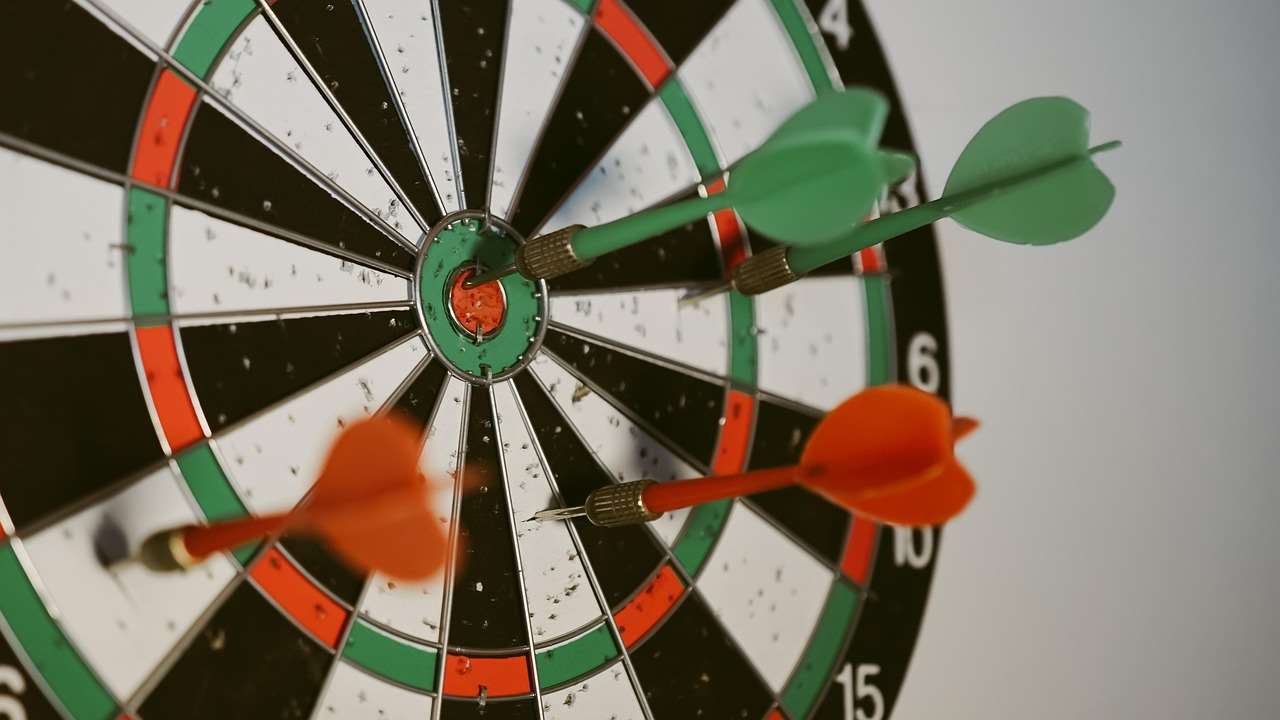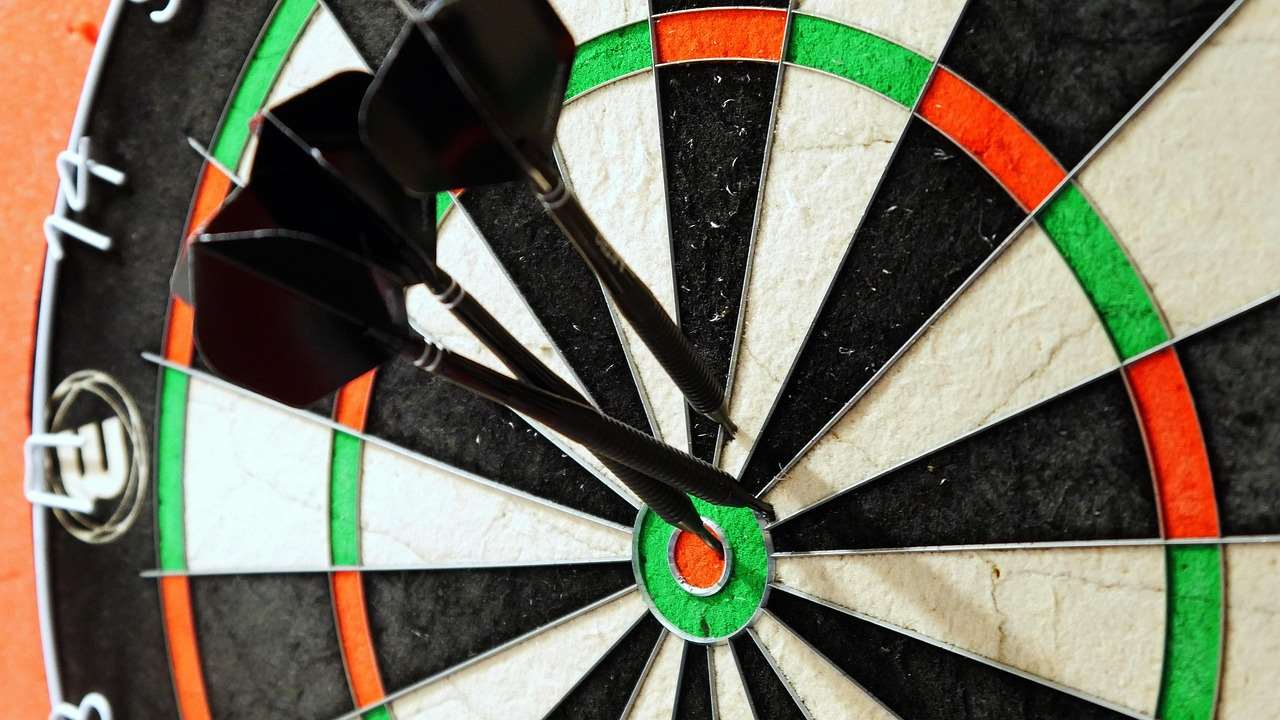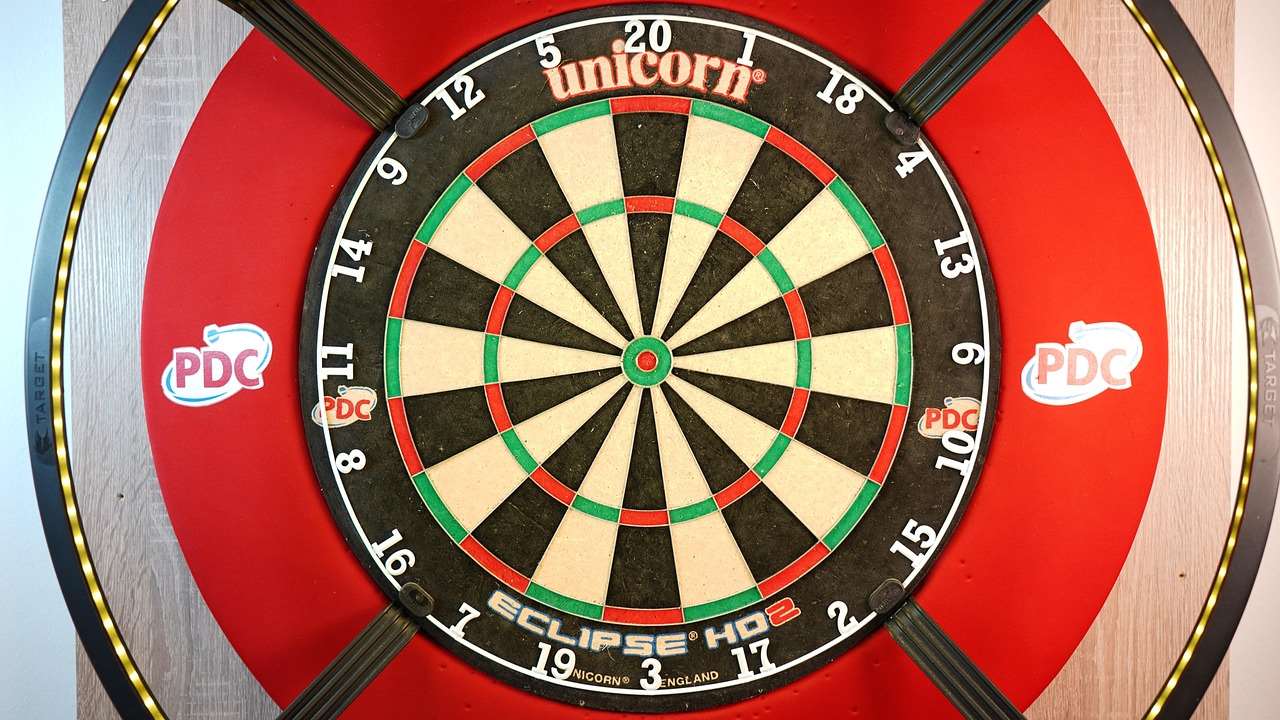Unlocking the secrets to success in darts often involves more than just a good arm; it’s about analyzing darts statistics to identify strengths, weaknesses, and areas for improvement. This article will show you how to effectively analyze your game, revealing actionable insights to elevate your performance. We’ll explore key metrics, data analysis techniques, and tools to help you master the art of analyzing darts statistics.
⚠️ Still Using Pen & Paper (or a Chalkboard)?! ⚠️
Step into the future! The Dart Counter App handles all the scoring, suggests checkouts, and tracks your stats automatically. It's easier than you think!
Try the Smart Dart Counter App FREE!Ready for an upgrade? Click above!
Understanding your own darts statistics is crucial for targeted practice and improvement. By meticulously tracking and analyzing various aspects of your game, you can create a personalized training plan that addresses your specific needs. This leads to more efficient practice sessions and faster progress. We will cover this in detail further down, looking at how to collect, interpret and utilize data for maximum impact.
Analyzing Darts Statistics: A Comprehensive Guide
Let’s dive into the world of analyzing darts statistics. It’s more than just keeping score; it’s about understanding the *why* behind the numbers. We’ll explore various metrics, data collection methods, and how to interpret the results to improve your game dramatically. The key lies in consistent data tracking and intelligent analysis. This process can be simplified using various tools such as Dart Counter App, or even by using a simple spreadsheet. Consistent data collection is the first step to gaining a meaningful understanding of your game.

One of the first things to consider is the type of data you’ll collect. While the basics, like your average score per leg and overall accuracy are important, there are far more intricate details that can provide a holistic picture of your game. Consider tracking your checkout percentage (percentage of successful finishes), three-dart averages broken down by location on the board, and even your accuracy for doubles. The more data you collect, the more accurate your analysis will be. You can even explore specialized darts statistics software or apps for more sophisticated analysis.
Key Metrics for Analyzing Darts Statistics
Several key metrics are essential for effective analyzing darts statistics. These metrics can help you pinpoint areas needing attention and track your progress over time. We’ll examine some of these key performance indicators (KPIs) in detail, illustrating how to interpret them effectively and use them to refine your strategy.
- Three-Dart Average: This is the average score you achieve with three darts. A higher average indicates greater consistency and skill.
- Checkout Percentage: The percentage of legs you finish after hitting a double. This metric directly reflects your finishing ability under pressure. A low checkout percentage often highlights a need for more focused doubles practice.
- Accuracy: This measures how many darts land in your intended segments. This should be further broken down by segment, which can reveal interesting insights. For instance, you might find you are consistently inaccurate in the top-right quadrant of the board, suggesting a need for adjustment to your throwing technique.
- Doubles Percentage: The percentage of doubles you hit. This is a crucial statistic, as success on the doubles is essential for winning legs.
- Leg Average: The average score per leg. While the three-dart average is a measure of consistency, the leg average reflects your overall performance in a complete leg of darts.
By tracking these metrics consistently, you build a detailed picture of your strengths and weaknesses, providing valuable insights for targeted training and improvements. The key is to track your progress over time to see the impact of your training efforts.

Tools and Techniques for Analyzing Darts Statistics
Analyzing darts statistics effectively relies on the right tools and techniques. While a simple notepad and pen can work for basic tracking, specialized tools can greatly enhance the process. Numerous apps are available, such as Dart Counter App features, and some even offer advanced analysis features, such as identifying patterns in your throws or suggesting specific practice drills based on your performance. Choosing the right tool depends on your preferences and the level of detail you require in your analysis. Consider exploring options like online dart score keeper services as well.
Data Collection Methods
Consistent data collection is fundamental to effective analyzing darts statistics. You can use various methods: manual scorekeeping, using a dedicated darts statistics app like Dart Counter App, or using specialized software. Each method has its advantages and disadvantages. Manual scorekeeping is straightforward but prone to errors. Apps can automate the process but require setup and familiarization. The best method is the one you find the most sustainable and convenient.
Data Analysis Techniques
Once you have collected your data, you need to analyze it effectively. Simple techniques involve calculating averages and percentages. However, more sophisticated methods exist. You can visually represent your data using charts and graphs to identify trends. For instance, a bar graph showing your accuracy in each segment of the board can help you identify specific areas for improvement. A line graph plotting your three-dart average over time can track your progress. For in-depth analysis, consider using statistical software to find correlations and patterns.
Remember, the ultimate goal of analyzing darts statistics isn’t just to collect numbers; it’s to understand your game better and tailor your practice to overcome weaknesses and improve your strengths. Remember to use this data to drive practice, not to discourage you! Consistent effort and focused practice based on data analysis will lead to a significant improvement in your overall game.

Improving Your Game Through Data-Driven Insights
The real value of analyzing darts statistics lies in its application to improve your game. Identifying patterns and weaknesses through data allows you to create a personalized training regimen that addresses your specific areas of concern. For example, if your analysis reveals a consistently low checkout percentage, you can focus on dedicated doubles practice. Similarly, if you are consistently missing in specific areas of the board, you may need to review your grip or throwing technique, or perhaps even explore the impact of different dart flights shapes and effects.
Personalized Training Plans
Based on your analyzing darts statistics findings, you can create a tailored training plan. This isn’t a one-size-fits-all approach; it’s about focusing on the areas identified as needing the most attention. This plan may include specific drills for improving your accuracy, increasing your checkout percentage, or improving your overall consistency. Focus on practice sessions that target identified areas for improvement, rather than broad, general practice sessions. The more specific and targeted your training, the more efficient your progress will be.
You can further refine your training plan by tracking your progress over time. Regular review of your analyzing darts statistics will reveal the effectiveness of your current strategy and allow for necessary adjustments. This iterative process of data collection, analysis, training, and reassessment is crucial for continuous improvement.
Regular maintenance of your equipment is also critical. Ensure you regularly clean and maintain your darts using appropriate techniques and products. See our guide on cleaning darts barrels for more tips.

Beyond the Numbers: The Mental Game
While analyzing darts statistics provides valuable objective data, don’t neglect the mental game. Confidence and mental resilience are vital for peak performance. While the numbers can provide insight into your technical skills, analyzing your mental approach to the game is equally important for long-term success. Consider journaling your feelings and mental state during games, and observe how these factors correlate to your performance. This self-awareness can prove as valuable as any objective data point.
The Around the Clock darts game is a particularly useful practice game to improve both your accuracy and mental resilience.
Furthermore, understanding the business of darts industry can provide insight into professional players’ approach to training and competition. It may also lead to exciting opportunities such as darts sponsorship deals.

Conclusion
Analyzing darts statistics is a powerful tool for any dart player looking to improve their game. By systematically tracking key metrics, using appropriate tools and techniques, and applying data-driven insights to your training, you can achieve significant improvements in your accuracy, consistency, and overall performance. Remember to choose the data collection method that works best for you and to consistently track your progress. Don’t be afraid to experiment and adapt your approach based on your findings. With dedicated effort and data-informed decision-making, you can unlock your full potential and elevate your dart game to new heights. Start tracking your darts statistics today and see the difference it makes! For more tips and resources, check out our comprehensive guide on interactive dart game setup and dart training apps.
“`
Hi, I’m Dieter, and I created Dartcounter (Dartcounterapp.com). My motivation wasn’t being a darts expert – quite the opposite! When I first started playing, I loved the game but found keeping accurate scores and tracking stats difficult and distracting.
I figured I couldn’t be the only one struggling with this. So, I decided to build a solution: an easy-to-use application that everyone, no matter their experience level, could use to manage scoring effortlessly.
My goal for Dartcounter was simple: let the app handle the numbers – the scoring, the averages, the stats, even checkout suggestions – so players could focus purely on their throw and enjoying the game. It began as a way to solve my own beginner’s problem, and I’m thrilled it has grown into a helpful tool for the wider darts community.